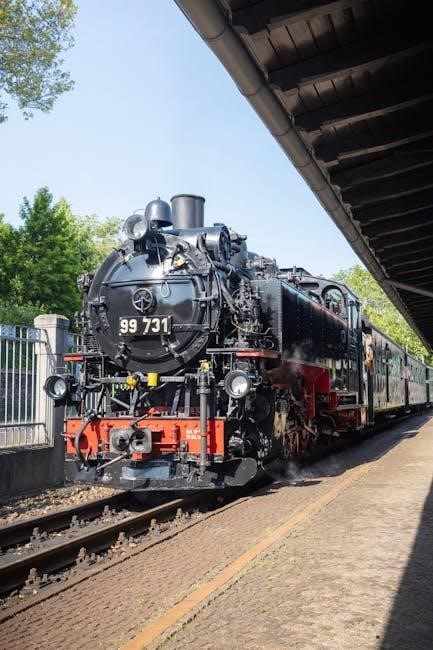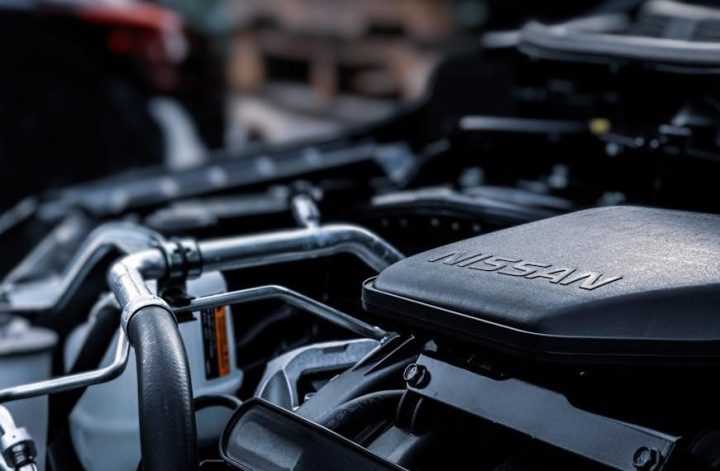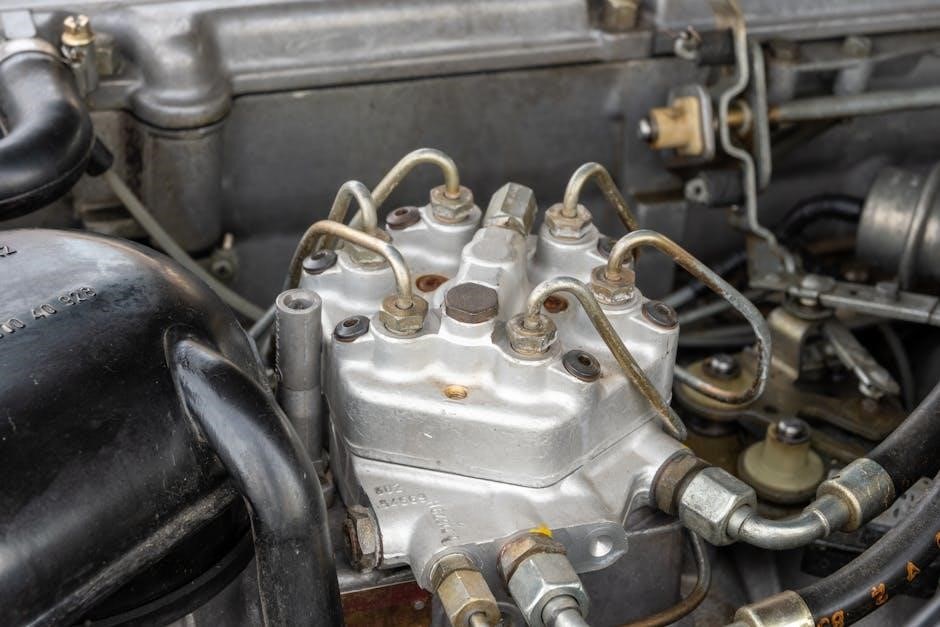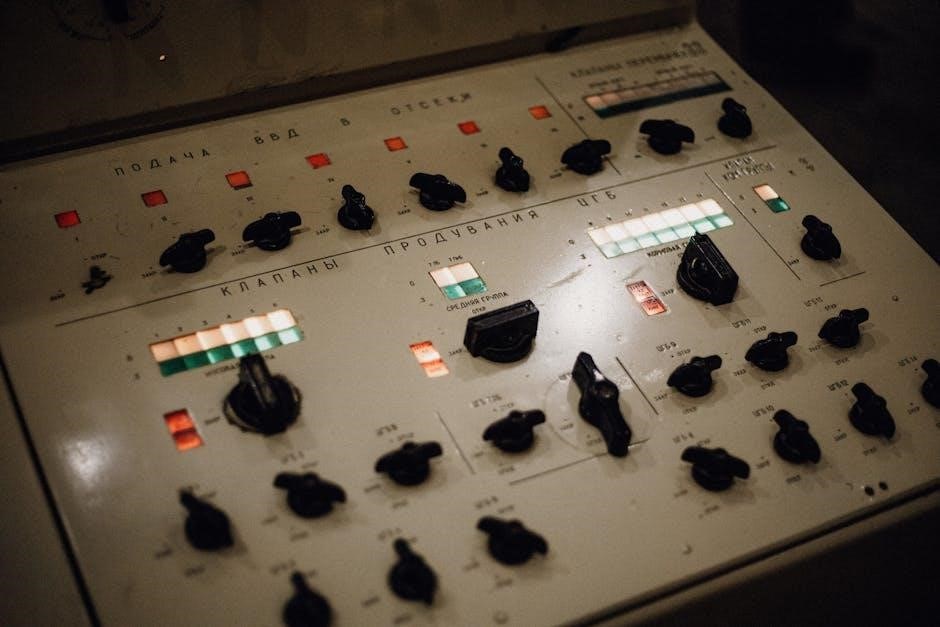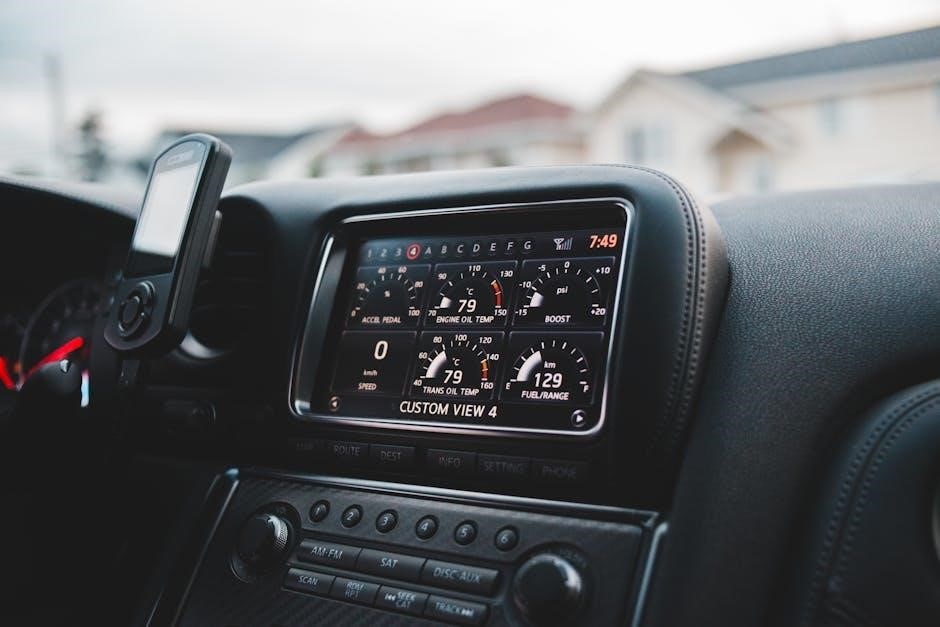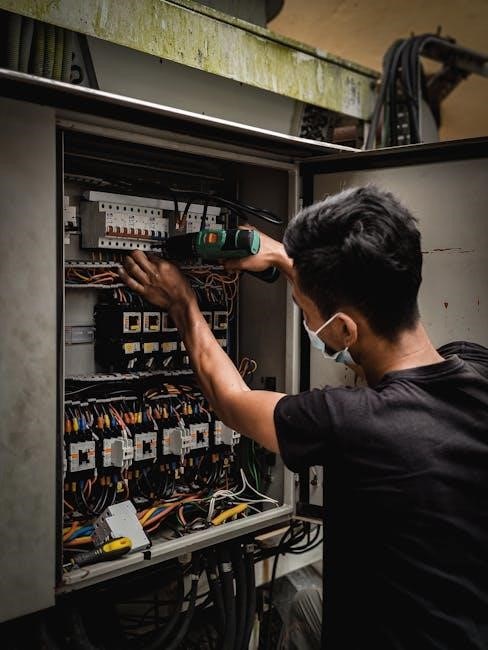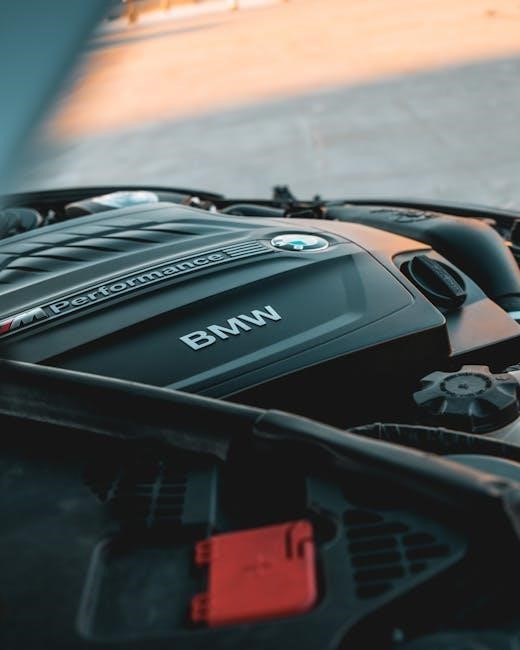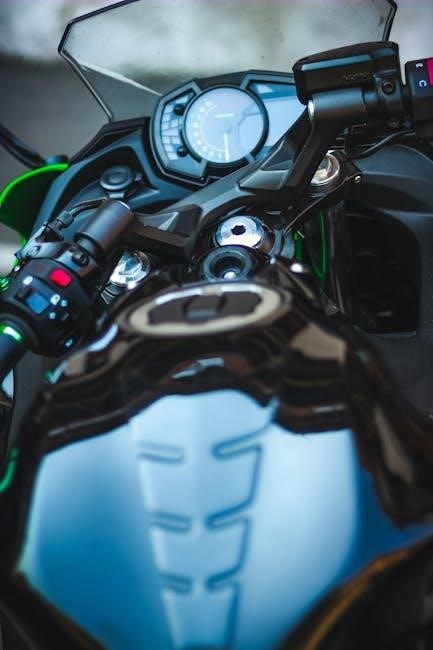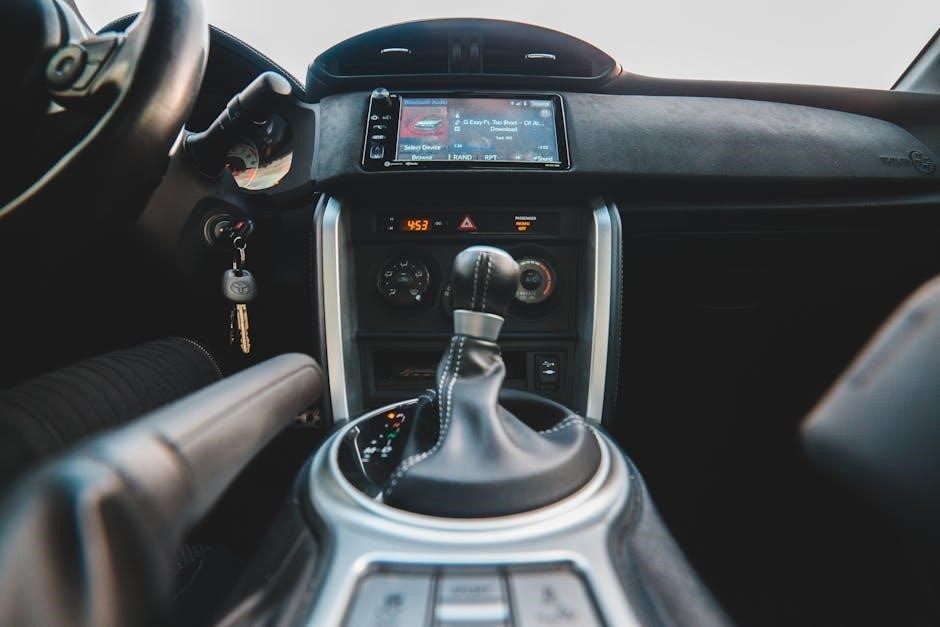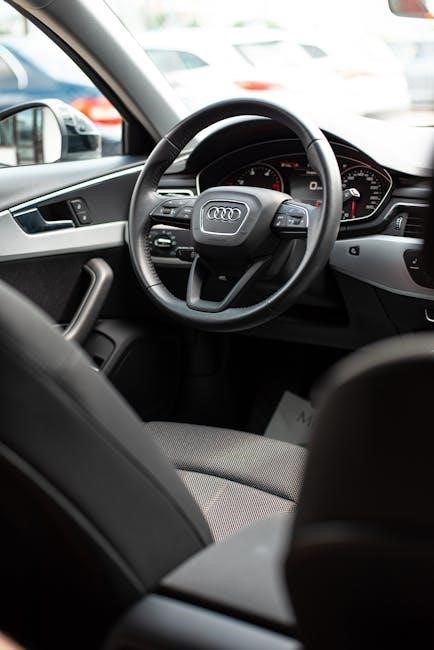Welcome to the Cobra Radar Detector Manual! This guide helps you understand and optimize your detector’s performance, ensuring safety and convenience on the road. Thank you for choosing Cobra!
Overview of the Cobra Radar Detector
The Cobra Radar Detector is a sophisticated device designed to alert drivers of potential radar and laser speed monitoring. Equipped with advanced technology, it provides real-time alerts for radar bands, laser guns, and safety cameras. Cobra detectors are known for their reliability, accuracy, and user-friendly interfaces. Whether you’re driving in urban areas or on highways, these devices ensure you stay informed and compliant with traffic laws. By combining cutting-edge features like GPS capabilities and smartphone app integration, Cobra Radar Detectors offer a comprehensive solution for safe and informed driving experiences. This overview highlights the core functionality and benefits of Cobra’s innovative radar detection systems.
Importance of Reading the Manual
Reading the Cobra Radar Detector Manual is essential for understanding your device’s operation, features, and proper usage. It provides step-by-step instructions for installation, setup, and troubleshooting, ensuring optimal performance and safety. The manual details how to maximize features like radar/laser protection, GPS capabilities, and smartphone app integration. By understanding the detector’s functions, you can avoid false alerts, maintain compliance with legal requirements, and enjoy a seamless driving experience. Additionally, the manual offers insights into updating software and accessing customer support, making it a vital resource for getting the most out of your Cobra Radar Detector.
Key Features of the Cobra Radar Detector
Cobra radar detectors are equipped with advanced features to enhance your driving experience. They offer radar and laser protection, detecting multiple bands for comprehensive coverage. GPS capabilities provide location-based alerts and speed camera notifications. Smartphone app integration allows real-time updates and community-driven alerts. The detectors also feature city/highway modes to reduce false alerts in urban areas. With customizable sensitivity settings and voice alerts, Cobra detectors ensure safety and convenience. These features make Cobra radar detectors a reliable choice for drivers seeking to avoid speeding tickets and navigate roads confidently. They combine innovation and user-friendly design for optimal performance.

Understanding the Cobra Radar Detector Models
Cobra offers a range of radar detector models, each designed with unique features to meet different driver needs. From basic to advanced, these models provide reliable protection and convenience.
Cobra RAD 380 Model
The Cobra RAD 380 is a popular radar detector known for its reliability and essential features. It offers detection of multiple radar bands, ensuring comprehensive protection against speed monitoring systems. With its intuitive design, the RAD 380 provides clear alerts and easy-to-understand notifications. It includes features like City/Highway mode to reduce false alerts and automatic muting for convenience. The detector is also compact and easy to install, making it a great option for drivers seeking a balance between performance and simplicity. Its affordability and effectiveness make it a top choice for those looking for basic yet reliable radar detection capabilities on the road.
Cobra ESD-6050 LE Model
The Cobra ESD-6050 LE is a high-performance radar detector designed to provide advanced protection against speed monitoring systems. It features a 6-band detection system, including X, K, Ka, and laser signals, ensuring comprehensive coverage. The detector is equipped with ultra-fast signal processing and advanced microprocessors for quick and accurate alerts. It also includes VG-2 and Spectre IV undetectability, making it stealthy for users concerned about privacy. The ESD-6050 LE offers intuitive controls and clear voice alerts, making it user-friendly. With its robust design and reliable performance, it is a trusted choice for drivers seeking a balance between functionality and affordability on the road.
Cobra RAD 480i Model

The Cobra RAD 480i is a premium radar detector offering advanced features for drivers seeking reliable protection. Equipped with GPS capabilities, it provides location-based alerts and access to Cobra’s AURA database for real-time updates on speed cameras and red-light intersections. The detector supports Bluetooth connectivity, enabling seamless integration with the Cobra iRadar app for enhanced functionality. It detects multiple radar bands, including K, Ka, X, and laser signals, ensuring comprehensive coverage. The RAD 480i also features a city/highway mode to reduce false alerts and offers customizable settings for optimized performance. Its sleek design and user-friendly interface make it a top choice for discerning drivers.
Cobra iRadar 200 Model
The Cobra iRadar 200 offers a unique combination of affordability and functionality, making it an excellent choice for drivers seeking a reliable radar detector. This model operates in conjunction with the Cobra iRadar app, which is available for download on iOS and Android devices. The app provides real-time alerts, tracks your speed, and offers a community-sharing feature to enhance detection accuracy. The detector itself supports multiple radar bands and includes features like city/highway mode to minimize false alerts. Its compact design and ease of use make it a popular option for everyday drivers looking to stay aware of their surroundings while on the road.

Installation and Setup Instructions
Mount the detector on your windshield, connect it to your vehicle’s power source, and download the Cobra iRadar app for real-time alerts and seamless smartphone integration.
MOUNTING THE DETECTOR
Properly mounting your Cobra radar detector ensures optimal performance. Attach the detector to your windshield using the provided suction cup mount for a secure and adjustable fit. Clean the windshield surface beforehand to ensure a strong hold. Position the detector in the center of the windshield, avoiding obstructed views or blocking essential driver visibility. For models like the Cobra RAD 480i, ensure the detector is level and facing directly forward. Refer to the quick start guide or full manual for specific mounting instructions tailored to your Cobra model. This ensures proper functionality and compliance with safety standards while driving.
CONNECTING THE DETECTOR TO YOUR VEHICLE
To connect your Cobra radar detector, use the provided power cord and plug it into your vehicle’s 12V auxiliary power outlet (cigarette lighter). Ensure the detector is securely mounted on the windshield before connecting power. For models like the Cobra RAD 480i, the power cord may include a built-in USB port for charging smartphones. Once connected, turn on the ignition to power the detector. Avoid using extension cords or adapters, as they may cause interference. Proper power connection ensures uninterrupted functionality and accurate alerts. Refer to your specific Cobra model’s manual for any additional wiring or installation requirements.
DOWNLOADING AND INSTALLING THE COBRA iRADAR APP
To enhance your Cobra radar detector experience, download the free Cobra iRadar app from the Apple App Store or Google Play Store. For iPhone users, search “Cobra iRadar” and select the app. For Android devices, open the Google Play Store and follow the same steps. Once downloaded, install the app and launch it. The app connects to your Cobra detector via Bluetooth, providing real-time alerts, GPS capabilities, and access to the AURA database for updated speed and red-light camera locations. Ensure your detector is paired with your smartphone for seamless functionality. The app is free and compatible with all Cobra radar detector models, including the RAD 480i and iRadar 200.
PAIRING THE DETECTOR WITH YOUR SMARTPHONE
Pairing your Cobra radar detector with your smartphone is straightforward. Ensure Bluetooth is enabled on both devices. Open the Cobra iRadar app, available for free on the App Store or Google Play. Follow the in-app instructions to search for and connect to your detector. Once paired, the app will provide real-time alerts, GPS updates, and access to the AURA database for speed and red-light camera locations. This integration enhances your driving experience by offering advanced features and seamless connectivity. Ensure your detector and smartphone are compatible for optimal performance.

Features of Cobra Radar Detectors
Cobra radar detectors offer advanced features like radar/laser protection, GPS capabilities, smartphone app integration, multiple detection bands, and City/Highway mode for enhanced performance and convenience.
Radar/Laser Protection
Cobra radar detectors provide exceptional radar and laser protection, detecting multiple bands (X, K, Ka) and laser signals for comprehensive coverage. Advanced algorithms minimize false alerts while maximizing detection range. The detectors are undetectable by VG-2 and Spectre radar detector detectors, ensuring stealth operation. With dual antennae for improved accuracy, Cobra devices offer real-time alerts for speed traps and traffic monitoring systems. This technology helps drivers avoid speeding tickets and maintain safe driving practices, leveraging cutting-edge engineering to stay ahead of enforcement tools. The combination of reliability and precision makes Cobra detectors a trusted choice for motorists seeking protection on the road.
GPS Capabilities
Cobra radar detectors with GPS capabilities offer advanced location-based features, enhancing your driving experience. The built-in GPS enables the detector to remember common locations, such as home or work, and adjust sensitivity to reduce false alerts. Additionally, it provides real-time updates on speed traps, red-light cameras, and traffic enforcement areas through the Cobra iRadar app. This integration allows you to receive geographically relevant alerts, helping you avoid potential hazards and tickets. The GPS functionality also supports speed tracking and route memory, ensuring a more informed and safer journey. With Cobra’s GPS capabilities, you gain a proactive defense system tailored to your driving habits and surroundings.
Smartphone App Integration
Cobra radar detectors seamlessly integrate with the Cobra iRadar app, enhancing your driving experience through real-time alerts and customizable settings. Download the app for free from the App Store or Google Play, then pair it with your detector via Bluetooth. This integration allows you to receive location-based alerts, track speed traps, and monitor red-light cameras. The app also enables voice alerts, speed tracking, and user-reported threats, giving you a comprehensive defense system. By syncing your detector with the app, you gain access to a community-driven database, ensuring you stay informed and protected on the road.
Multiple Detection Bands
Cobra radar detectors are equipped with multiple detection bands, ensuring comprehensive coverage against various radar and laser signals. These bands include X, K, and Ka bands, which are commonly used by law enforcement. The detectors also offer 360-degree protection, detecting signals from all directions. Advanced models incorporateVG-2 and Spectre IV detection, safeguarding against radar detector detectors. This multi-band capability minimizes false alerts while maximizing sensitivity, providing drivers with accurate and reliable warnings. With Cobra’s sophisticated technology, you can enjoy a safer and more informed driving experience, knowing you’re protected across the full spectrum of radar frequencies.
City/Highway Mode
Cobra radar detectors feature a City/Highway mode to optimize performance based on your driving environment. In City mode, sensitivity is reduced to minimize false alerts from non-police radar sources like automatic door openers. Highway mode increases sensitivity for longer-range detection of legitimate threats. This dual-mode system ensures accurate alerts and reduced distractions, tailoring the detector’s response to your surroundings. By adjusting settings according to your location, you can enhance detection accuracy and enjoy a smoother driving experience. This feature is designed to adapt to varying conditions, providing reliable protection wherever you go.

Operating the Cobra Radar Detector
Operating the Cobra Radar Detector involves powering it on/off, adjusting settings like brightness and sensitivity, and understanding alerts. Use the app for real-time updates and settings.
Powering On/Off
To power on your Cobra radar detector, press and hold the power button located on the top or side of the device until the LED lights up. The detector will initialize, and you’ll hear a confirmation beep. To turn it off, press and hold the same button until the LED turns off. Some models may feature automatic shutdown to conserve battery life. Always ensure the detector is properly powered before driving to maintain optimal protection. Refer to your specific model’s manual for detailed instructions on power management and any additional features like automatic startup or low-battery alerts.
Adjusting Sensitivity Settings
Adjusting the sensitivity settings on your Cobra radar detector ensures optimal performance in various driving environments. Press the volume button to cycle through sensitivity modes, such as City or Highway. City mode reduces false alerts in urban areas, while Highway mode maximizes range and detection. Some models feature automatic sensitivity adjustment based on speed. For manual control, use the sensitivity button or refer to your detector’s menu options. Proper sensitivity adjustment helps minimize false alerts and ensures accurate detection of radar and laser signals, enhancing your driving experience and safety on the road. Always test settings in different conditions for best results.
Understanding Alert Systems
Understanding the alert systems on your Cobra radar detector is crucial for maximizing its effectiveness. The detector emits visual and audible alerts when it detects radar or laser signals. Radar alerts are indicated by beeps or tones, with intensity matching signal strength. Laser alerts often produce a continuous tone. The display shows the band type (e.g., K, Ka, X) and signal strength bars. Voice alerts are available on select models. Use the Cobra iRadar app for additional alerts, such as speed traps and red-light cameras. Familiarize yourself with these alerts to respond promptly and avoid potential hazards while driving. Adjust settings to minimize false alerts for a smoother experience.
Using the Cobra iRadar App
The Cobra iRadar app enhances your driving experience by providing real-time alerts and advanced features. Download the app from the App Store or Google Play for free. Once installed, connect your smartphone to the detector via Bluetooth for seamless integration. The app offers real-time alerts for speed traps, red-light cameras, and police activity. Customize settings to tailor alerts based on your preferences. Access the AURA database for crowd-sourced reports on traffic enforcement; Use voice commands for hands-free control and stay informed with detailed notifications. This integration ensures a safer and more informed driving experience, leveraging both your Cobra detector and smartphone capabilities.

Troubleshooting Common Issues
Troubleshooting common issues ensures optimal performance. Address problems like false alerts, connectivity issues, and firmware updates for a seamless experience with your Cobra radar detector.
Detector Not Turning On
If your Cobra radar detector fails to turn on, check the power button and ensure it’s functioning properly. Verify all cable connections, including the power cord and vehicle outlet. Ensure the outlet is working and not fused. If using a battery, check its charge level and connections. Try resetting the device or using a different power source. If issues persist, consult the troubleshooting section or contact Cobra support for assistance. Proper power connections are essential for optimal performance. Ensure all components are securely plugged in and functioning correctly.
False Alerts
False alerts occur when your Cobra radar detector picks up non-police radar signals, such as automatic door openers or other electronic devices. To minimize these, use the City/Highway mode to adjust sensitivity. In urban areas, enable City mode to reduce false signals from nearby devices. Regularly update your detector’s software to improve filtering accuracy. If false alerts persist, consult the manual for specific settings adjustments or contact Cobra support for further assistance. Proper calibration ensures reliable performance and reduces unnecessary interruptions while driving.
Bluetooth Connectivity Problems
Bluetooth issues may arise when pairing your Cobra radar detector with your smartphone. Ensure your device is discoverable and within range. Restart both devices and retry pairing. Verify Bluetooth is enabled on your phone and the detector. If problems persist, reset the detector by turning it off, waiting 10 seconds, and turning it back on. Ensure the Cobra iRadar app is updated to the latest version. If connectivity issues continue, refer to the manual or contact Cobra customer support for assistance. Proper pairing ensures seamless integration and optimal performance of your radar detector.
Updating Firmware
Regular firmware updates are essential for optimal performance of your Cobra radar detector. To update, connect the detector to your computer using a USB cable or GPS dongle. Download the latest firmware from the Cobra website and follow on-screen instructions. Ensure the detector is fully powered during the update. If using the Cobra iRadar app, check for app updates in the App Store or Google Play. Keep your detector up-to-date to access new features, improve accuracy, and fix any bugs. Regular updates ensure your Cobra radar detector remains effective and compatible with the latest technologies.
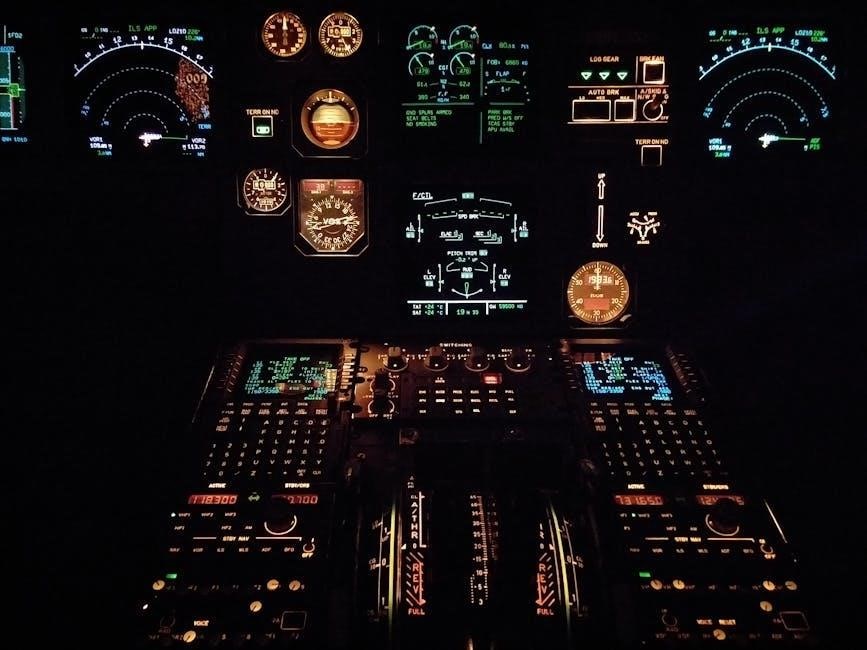
Maintenance and Care
Regularly clean your Cobra radar detector with a soft cloth and avoid harsh chemicals. Update software via the Cobra website or iRadar app for optimal performance. Store properly.
Cleaning the Detector
To maintain your Cobra radar detector’s performance, clean it regularly. Use a soft, dry cloth to wipe the exterior and avoid harsh chemicals. For tougher smudges, dampen the cloth slightly but ensure no moisture enters the device. Avoid touching the lens or display, as oils from skin can cause smudging. For stubborn stains, use a mild screen cleaner with a microfiber cloth, following the product’s instructions. Never spray cleaning solutions directly on the detector. Regular cleaning prevents dust buildup and ensures optimal signal reception and display clarity. Refer to your specific model’s manual for detailed cleaning instructions to maintain your Cobra detector in prime condition.
Updating Software
Regular software updates ensure your Cobra radar detector performs optimally. Use the Cobra iRadar app to check for updates and download the latest firmware. Connect your detector to your smartphone via Bluetooth and follow in-app instructions. For models without app integration, visit Cobra’s official website, download the update file, and transfer it using a USB cable or dongle. Updating enhances detection accuracy, adds new features, and improves compatibility. Always ensure a stable internet connection during updates and refer to your manual for specific instructions to avoid interruptions. Keeping your software up-to-date guarantees the best driving experience with your Cobra radar detector.
Replacing Parts
If your Cobra radar detector requires part replacement, ensure authenticity by purchasing from Cobra-approved sources. Common parts like suction cups, power cords, or mounting brackets can be replaced easily; Before starting, power off the device and consult your manual for specific instructions. For complex components, contact Cobra customer support or visit their official website for guidance. Using genuine Cobra parts ensures optimal performance and maintains your warranty. Always follow proper installation steps to avoid damage. Regularly inspect and replace worn-out parts to keep your detector functioning effectively and extend its lifespan for reliable protection on the road.

Legal Considerations
Understand the legal aspects of using Cobra radar detectors. Federal laws permit their use, except for commercial vehicles. State-specific regulations vary; some, like Virginia and Washington D.C., ban them entirely. Always check local laws to ensure compliance and avoid penalties.
Federal Laws on Radar Detectors
Federal laws in the United States permit the use of radar detectors for personal vehicles, as they are not prohibited under federal regulations. However, radar detectors are banned for use in commercial vehicles. This legal framework ensures that drivers can utilize these devices to enhance safety and awareness on the road. It is important to note that while federal law allows radar detectors, some states and Washington, D.C., have implemented stricter regulations; Always verify local laws to ensure compliance and avoid potential penalties while using your Cobra radar detector.
State-Specific Regulations
State laws regarding radar detectors vary across the U.S. While most states permit their use, certain restrictions apply. Virginia and Washington, D.C., prohibit radar detectors entirely, while others may limit their use in commercial vehicles. Additionally, some states enforce stricter rules on mounting devices to windshields. Always check local regulations before using your Cobra radar detector to avoid legal complications. This manual encourages responsible use, ensuring compliance with all applicable laws. For detailed information, refer to your state’s Department of Motor Vehicles or official Cobra resources.

Customer Support and Resources
Visit Cobra’s official support website for comprehensive resources, including downloadable manuals and FAQs. Contact customer service via phone, email, or live chat for assistance.
Accessing the Cobra Support Website
Visit Cobra’s official support website for comprehensive assistance. Navigate to www.cobra.com and explore the “Support” section. Here, you can download full user manuals, access FAQs, and find troubleshooting guides. Additionally, the site offers detailed product information, firmware updates, and customer service contact options. Utilize this resource to resolve issues, learn about new features, and optimize your radar detector’s performance. Cobra’s support website is designed to provide quick and efficient solutions, ensuring you get the most out of your device.
Downloading the Full Manual
To download the full manual for your Cobra radar detector, visit the official Cobra website at www.cobra.com. Navigate to the “Support” section and select “Manuals” from the dropdown menu. Enter your product model, such as RAD 380 or ESD-6050 LE, and click “Search.” A PDF version of the manual will be available for download. This ensures you have access to detailed instructions, troubleshooting guides, and feature explanations. The manual is essential for understanding your detector’s capabilities and optimizing its performance. Downloading is quick, easy, and free, providing you with comprehensive support whenever you need it.
Contacting Cobra Customer Service
For any questions or assistance with your Cobra radar detector, visit the official Cobra support website at www.cobra.com. Click on “Support” and explore the resources available, including FAQs, manuals, and contact options. You can also reach Cobra customer service directly via phone or email for personalized help. Additionally, the Cobra iRadar app provides in-app support features to address common inquiries. Whether you need troubleshooting or general guidance, Cobra’s customer service team is ready to assist you in optimizing your radar detector’s performance and ensuring a smooth user experience.









